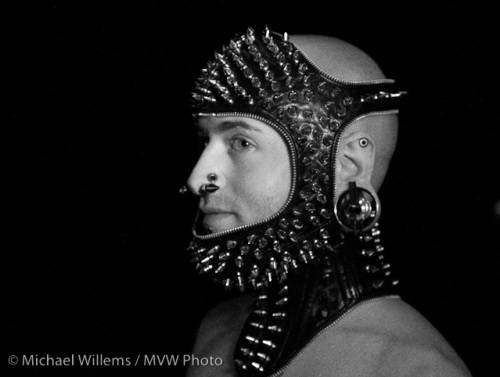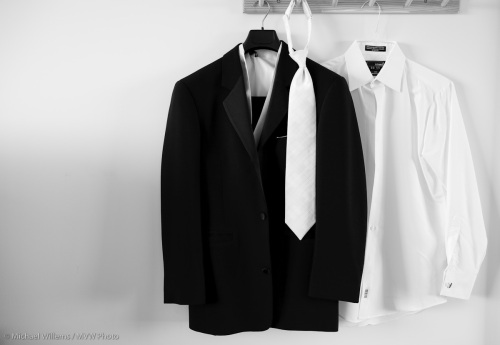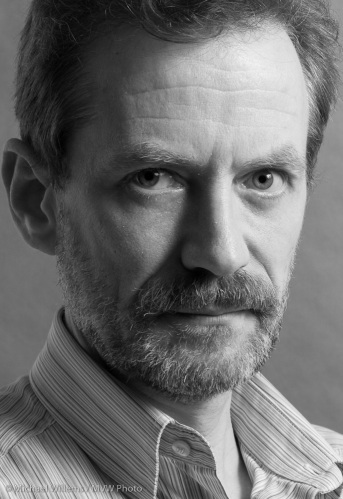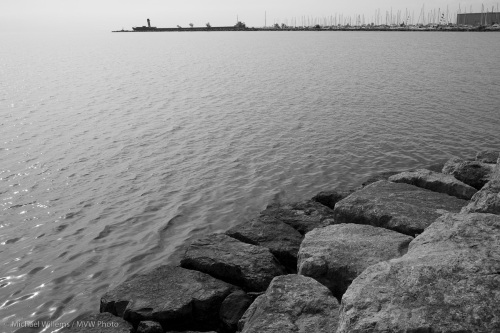..is underrated, I think; especially for portraits. Or else why don’t we do it more?
A good black and white photo can full of character; moody, even. Especially in portraits, where the absence of colour means the absence of distraction, and the ability to concentrate on the essence of the person.

35mm f/1.4, 1/30th sec, available light
For a good B&W picture, you need to realize that the background and the subject need to contrast, and that where we see clear colour contrast, in a B&W picture we may see none.
B&W works especially well where colour distracts. It can work where the subject either has blacks and whites, or is high-key or low-key. A good B&W picture can be a study in shades of grey.
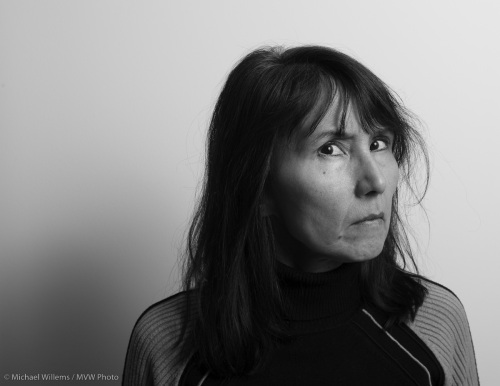
35mm on 1.3 crop camera, f/8, 1/200th sec, strobe in umbrella.
When I shoot black and white, I do the following.
- I shoot in RAW. This is essential.
- I always set the camera to “Black and white” also. Even though this has no effect on the RAW images, it gives me a preview of roughly what the image will look like.
- I ensure I do not overexpose the whites, but I do “expose to the right”. I.e. until the histogram almost hits the right edge.
- Then I finish the image in Lightroom. In the DEVELOP module, I use the GRAYSCALE adjustment in the HSL/COLOR/GRAYSCALE tool. This gives me the easy ability to change different colours’ brightness.
This last step in particular has made B&W a practical endeavour once again for a busy guy like me. You know what they say: “no rest for the wicked”. And if I were, oh, 35 years younger I would add a “LOL” at the end of that.
Finally: B&W does not have to be moody – or rather, the mood does not have to be serious. Here’s my friend Keith, and his happiness and intelligence, big parts of his personality, really shine though here:
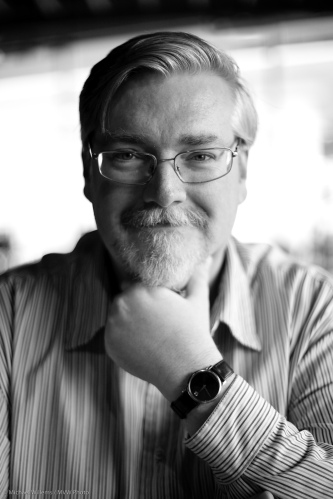
50mm f/1.4, 1/1000th sec, available light
Go ahead, give it a go. Have fun shooting B&W. And because you are shooting RAW, you can always go back to colour at the touch of a button.

